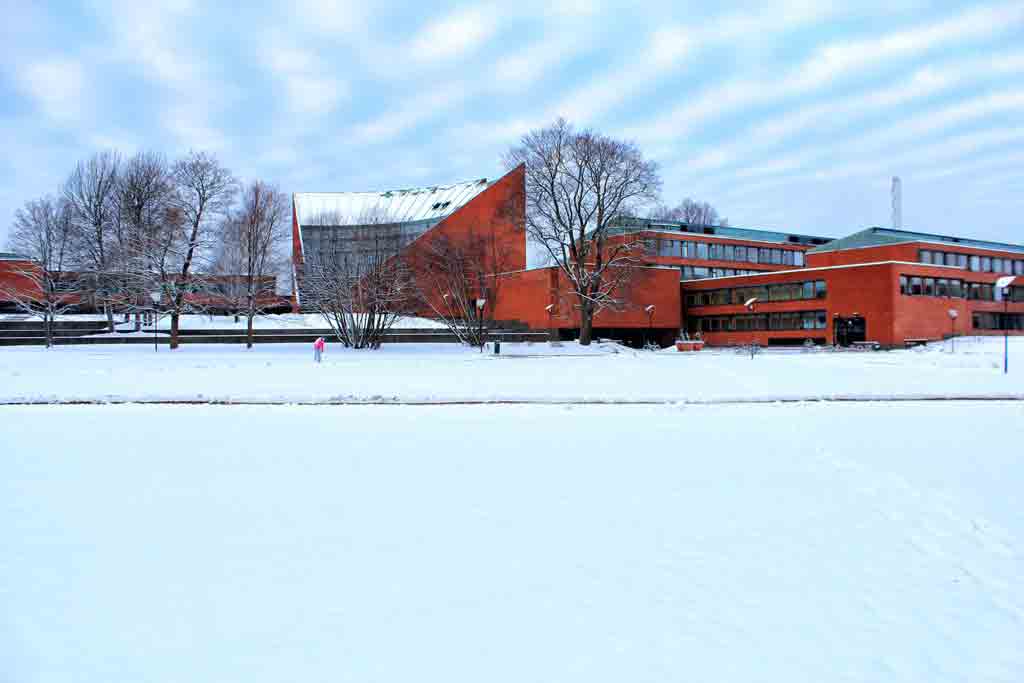About me
About me
A list of all the posts and pages found on the site. For you robots out there is an XML version available for digesting as well.
About me
Published:
Here, We consider the Direction of Arrival (DoA) estimation using the Multiple Signal Classification (MUSIC) and Estimation of Signal Parameters via Rotational Invariance Technique (ESPRIT) algorithms. DoA estimation finds a lot of applications in wireless positioning, target tracking and MIMO channel estimation etc. MUSIC and ESPRIT are two popular techniques for such problems. ESPRIT is more computationally efficient than MUSIC. The code is available here.
Published:
Here, a fast ray tracing simulator for mmWave channel generation in a complex urban outdoor environment is given. The source codes are available in my github page.
Published:
New 5G technologies are making spectrum bands above 24 GHz, loosely known as mmWave, available for mobile broadband communications for the first time. The abundant spectrum available at these high frequencies is capable of delivering extreme data speeds and capacity that will reshape the mobile experience.
Otaniemi Fall and Winter
 Otaniemi Fall and Winter
Otaniemi Fall and Winter
 Otaniemi Fall and Winter
Otaniemi Fall and Winter
 Otaniemi Fall and Winter
Otaniemi Fall and Winter
 Otaniemi Fall and Winter
Otaniemi Fall and Winter
 Otaniemi Fall and Winter
Otaniemi Fall and Winter
 Otaniemi, main building
Otaniemi, main building
 Otaniemi, trees before Autumn
Otaniemi, trees before Autumn
 Otaniemi, Seaside
Otaniemi, Seaside
 Otaniemi, Sea grass
Otaniemi, Sea grass
 Otaniemi, Seaside ice
Otaniemi, Seaside ice
 Helsinki, night
Helsinki, night
 Helsinki, house and snow
Helsinki, house and snow
 Sunrise in my Hometown, i.e. Weizhou island, Beihai, Guangxi, China
Sunrise in my Hometown, i.e. Weizhou island, Beihai, Guangxi, China

Published in 2015 IEEE Globecom Workshops (GC Wkshps), 2015
Device-to-Device (D2D) communication underlying 5G cellular networks enable using direct communication between devices as a relay strategy for coverage extension. We consider such a D2D-relaying approach in a scenario where there are multiple candidate devices to be selected as relays. Both backhaul and D2D transmissions are performed in uplink cellular resources, and are subject to cellular uplink power control. We investigate the relay selection and resource allocation problem for D2D-relaying in a multi-user, multi-carrier and multi-cellular network. For this purpose, we formulate a joint optimization problem and propose a simplified relay selection and resource allocation scheme. Using this scheme in a system simulation, we demonstrate that D2D-relaying under uplink power control increases the throughput of cell-edge users significantly. Download paper here
Recommended citation: Junquan Deng, Alexis A. Dowhuszko, Ragnar Freij, Olav Tirkkonen. IEEE Global Communications Conference Workshops. GC Wkshps 2015. http://dengjunquan.github.io/files/GWwksp2015.pdf
Published in 2016 IEEE 27th Annual International Symposium on Personal, Indoor, and Mobile Radio Communications (PIMRC), 2016
We discuss the motivation and potential use-cases of self-organizing networks (SON) in 5G networks. Disruptive technologies and features of 5G networks include millimeter wave (mmW), massive multiple-input multiple output (MIMO), and cloud-radio access network (C-RAN). These have ramifications on SON aspects of the networks. We discuss several new SON use-cases and problems pertinent to emerging 5G technologies. The discussed 5G SON use-cases include spectrum management and sharing, user association, multi-radio access technology (RAT) optimization, and directional cell search for mmW networks. We then investigate directional cell search in detail, and consider a network graph based approach for self-organized beam assignment in mmW 5G networks. Simulations results in a realistic Manhattan environment demonstrate the benefits of proposed approach, in terms of improved user signal-to-interference plus noise ratios to potential handover beams, thereby resulting in better directional cell discovery. Download paper here
Recommended citation: Furqan Ahmed, Junquan Deng, Olav Tirkkonen. Self-organizing networks for 5G: Directional cell search in mmW networks, 2016 IEEE 27th Annual International Symposium on Personal, Indoor, and Mobile Radio Communications (PIMRC), Valencia, 2016, pp. 1-5. PIMRC 2016. http://dengjunquan.github.io/files/PIMRC2016.pdf
Published in 2017 IEEE International Conference on Communications (ICC), 2017
We consider two-hop Device-to-device (D2D) relaying in multi-cell downlink networks. D2D relaying is envisioned to be a promising cell coverage extension technique, which can provide improved cell-edge performance without a dense infrastructure deployment. Relaying complicates the resource allocation and interference management in multi-cell networks. We first study the aggregate co-channel interference characteristics when D2D relaying is applied. A fluid network model is used to analyze the inter-cell interference in a multi-cell network with a minimum inter-base station distance. We develop a model for capturing the interaction between relaying decisions made in the own cell and inter-cell interference created to other cells. We investigate network steady state, and optimize key parameters for network-level management. Both simulation and analysis results are provided to help to understand the performance of D2D relaying. Download paper here
Recommended citation: Junquan Deng, Olav Tirkkonen, Tao Chen. 2017 IEEE International Conference on Communications. ICC 2017. http://dengjunquan.github.io/files/ICC2017.pdf
Published in IEEE Communications Magazine, 2017
The 5G networks are envisioned to use mmWave bands to provide gigabit-per-second throughput. To extend the coverage of extreme data rates provided by mmWave technologies, we consider two-hop relaying based on D2D communication in an integrated mmWave/sub-6 GHz 5G network. Compared to single-hop multi-cell networks, two-hop D2D relaying in this network will complicate the network management. Relay selection and beam selection should be considered together as relaying in mmWave bands would use directional beamforming transmissions. MmWave/ sub-6 GHz multi-connectivity has to be managed, and resources have to be allocated across frequencies with disparate propagation conditions. In this article, a hierarchical network control framework is considered to address the relay and beam selection, resource allocation, and interference coordination problems. The sub-6 GHz band is responsible for network control and for providing relatively reliable communications, while the mmWave band provides high-throughput enhancement. Opportunistic relay selection and mmWave analog beamforming are used to limit the signaling overhead. We evaluate mmWave/sub-6 GHz multi-connectivity with and without two-hop relaying in urban outdoor scenarios for different site deployment densities. MmWave/sub-6 GHz multi-connectivity with relaying shows considerable promise for reaching consistent user experience with high end-to-end throughput in a cost-effective network deployment. Download paper here
Recommended citation: Junquan Deng,Olav Tirkkonen,Ragnar Freij-Hollanti,Tao Chen,Navid Nikaein IEEE Communications Magazine,Volume: 55, Issue: 6, 2017. IEEE COMMAG. http://dengjunquan.github.io/files/Commag2017.pdf
Published in 2017 European Conference on Networks and Communications (EuCNC), 2017
The performance of millimeter wave (mmWave) networks is limited by severe blocking effects. Mobile relaying exploiting possible two-hop line-of-sight connections is a strong candidate for coverage extension and consistent user experience in mmWave networks. Here, relaying based on opportunistic analog beamforming is investigated, and sets of fixed beams are used for cell discovery, relay discovery and data transmission. A low-complexity relay & beam discovery and selection protocol is considered. Communication performance and signaling overhead are estimated. To provide good relaying performance for cell-edge users without introducing high relaying overhead, a relay candidate set is selected by choosing a proper size, and suitable membership based on a utility function. Simulation results show that with relay candidate sets having a proper size, opportunistic two-hop mmWave relaying can achieve both high mean user performance and consistent user experience. Download paper here
Recommended citation: Junquan Deng, Olav Tirkkonen, Tao Chen, Navid Nikaein. European Conference on Networks and Communications. EUCNC 2017. http://dengjunquan.github.io/files/EUCNC2017.pdf
Published in 2017 IEEE 28th Annual International Symposium on Personal, Indoor, and Mobile Radio Communications (PIMRC), 2017
We consider a user-centric network-level coordination architecture for 5G heterogeneous Radio Access Networks (RANs), based on RAN softwarization and a centralized coordination framework. We describe the RAN as a set of logical RAN entities, related to cells in a Heterogeneous Network (HetNet), under the control of a central coordination entity. This description allows the creation of Network Functions (NFs) with an abstracted view of the network. We describe a centralized coordination framework, and then develop a NF for InterCell Interference Coordination (ICIC) in a 5G HetNet, optimizing the radio resource usage at network-level. We construct a Network Graph to abstract the problem of resource allocation and cell offloading, with the NF seeking for an optimal solution based on this abstraction. Simulations are performed in a HetNet scenario with a Tabu Search algorithm. Results show the feasibility of performing network-level coordination through a modular NF, with an abstracted view of the network. Download paper here
Recommended citation: Sergio Lembo, Junquan Deng, Ragnar Freij-Hollanti ; Olav Tirkkonen ; Tao Chen. Hierarchical network abstraction for HetNet coordination, 2017 IEEE 28th Annual International Symposium on Personal, Indoor, and Mobile Radio Communications (PIMRC), Montreal, QC, Canada, 2017, pp. 1-7. PIMRC 2017. http://dengjunquan.github.io/files/PIMRC2017.pdf
Published in 2018 IEEE International Conference on Communications (WCNC 2018), 2018
To perform multi-user multiple-input and multipleoutput transmission in millimeter-wave (mmWave) cellular systems, the high-dimensional channels need to be estimated for designing the multi-user precoder. Conventional grid-based Compressed Sensing (CS) methods for mmWave channel estimation suffer from the basis mismatch problem, which prevents accurate channel reconstruction and degrades the precoding performance. This paper formulates mmWave channel estimation as an Atomic Norm Minimization (ANM) problem. In contrast to grid-based CS methods which use discrete dictionaries, ANM uses a continuous dictionary for representing the mmWave channel. We consider a continuous dictionary based on sub-sampling in the antenna domain via a small number of radio frequency chains. We show that mmWave channel estimation using ANM can be formulated as a Semidefinite Programming (SDP) problem, and the channel can be accurately estimated via off-the-shelf SDP solvers in polynomial time. Simulation results indicate that ANM can achieve much better estimation accuracy compared to grid-based CS, and significantly improves the spectral efficiency provided by multi-user precoding. Download paper here
Recommended citation: Junquan Deng, Olav Tirkkonen, Christoph Studer. 2017 IEEE International Conference on Communications. ICC 2017. http://dengjunquan.github.io/files/WCNC_2018.pdf
Published in 2018 52nd Asilomar Conference on Signals, Systems, and Computers, 2018
Multipoint channel charting is a machine learning framework in which multiple massive MIMO (mMIMO) base-stations (BSs) collaboratively learn a multi-cell radio map that characterizes the network environment and the users’ spatial locations. The method utilizes large amounts of high-dimensional channel state information (CSI) that is passively collected from spatiotemporal samples by multiple distributed BSs. At each BS, a high-resolution multi-path channel parameter estimation algorithm extracts features hidden in the acquired CSI. Each BS then constructs a local dissimilarity matrix based on the extracted features for its collected samples and feeds it to a centralized entity which performs feature fusion and manifold learning to construct a multi-cell channel chart. The objective is to chart the radio geometry of a cellular system in such a way that the spatial distance between two users closely approximates their CSI feature distance. We demonstrate that (i) multipoint channel charting is capable of unravelling the topology of a Manhattan-grid system and (ii) the neighbor relations between CSI features from different spatial locations are captured almost perfectly. Download paper here
Recommended citation: Junquan Deng, Said Medjkouh, Nicolas Malm, Olav Tirkkonen, Christoph Studer. Asilomar Conference on Signals, Systems, and Computers. Asilomar 2018. http://dengjunquan.github.io/files/Asilomar2018.pdf
Published in IEEE Transactions on Vehicular Technology , 2019
Millimeter-wave (mmWave) wireless communication promises high data-rates when combined with multiuser multiple input multiple-output (MU-MIMO) technology. A practical deployment of these technologies, however, faces numerous challenges, including the design of energy-efficient analog hardware. To address these challenges, we consider a hybrid base station architecture that consists of a set of fixed subarrays with quantized phase shifters (FS-QPS). For this system, we investigate the multiuser beamforming gains with different phase-quantization levels and subarray geometries. We show that for zero forcing baseband precoding, analog precoder optimization becomes an eigenvalue maximization problem, which can be approximated efficiently by received power maximization. We develop an efficient, optimal analog precoder for well-established mmWave channel models, and provide performance bounds characterizing the required phase-shifting accuracy for a beam-steering codebook as a function of the geometric size of the subarray. To demonstrate the efficacy of the proposed FS-QPS architecture, we show simulation results using the latest 3GPP mmWave channel model for multiuser spectral efficiency, and compare our solution to existing architectures. Download paper here
Recommended citation: Junquan Deng,Olav Tirkkonen, Christoph Studer IEEE IEEE Transactions on Vehicular Technology. IEEE TVT. http://dengjunquan.github.io/files/TVT2019.pdf
Published in 2019 International Conference on Wireless Communications and Signal Processing (WCSP 2019), 2019
We consider spectrum sensing in a wideband cognitive radio system where 1-bit analog-to-digital converters (ADCs) are adopted at the radio frequency (RF) sensors. We focus on a practical scenario where multiple narrow-band radio systems coexist in the considered wide spectrum range and the RF sensor has no prior knowledge about those ambient radio systems. First, we use Van Vleck’s arcsine law to analyze the impact of 1-bit sampling on performance of covariance matrix reconstruction. Second, we propose a novel 1-bit wideband spectrum sensing algorithm based on the subspace technique. We show that the proposed method exhibits near-zero false alarm (FA) while achieves the similar probability of detection (PD) performance as compared to conventional FFT based and correlation-based wideband sensing methods Download paper here
Recommended citation: Junquan Deng, Yong Chen. International Conference on Wireless Communications and Signal Processing. WCSP 2019. http://dengjunquan.github.io/files/WCSP2019.pdf
Published in The International Wireless Communications and Mobile Computing Conference (IWCMC 2021), 2021
We consider the network-side mobile localization problem in future 5G and beyond wireless networks with distributed multi-antenna base stations (BSs). For this application, we propose a semi-supervised multi-point channel charting (SS-MPCC) framework, which consists of (i) collaborative collection of channel state information (CSI) and other sideinformation by distributed BSs; (ii) local CSI feature extraction and self-learning of a dissimilarity metric, and (iii) global graph construction and constrained manifold learning. We show that side-information from routine network operations, including timestamps, channel qualities, and a small set of labeled samples, can be exploited to construct a consistent global graph. The graph is then mapped to a 2D channel chart using constrained manifold learning for localization purposes. We evaluate the performance of SS-MPCC in a simulated urban outdoor scenario with realistic user motion. Our results show that SS-MPCC achieves a mean localization error of 5.6 m with only 10% of labeled CSI samples. SS-MPCC does not require accurate synchronization among multiple BSs and is promising for future cellular localization. Download paper here
Recommended citation: Junquan Deng, Olav Tirkkonen, Jianzhao Zhang, Xianlong Jiao and Christoph Studer The 17th International Wireless Communications and Mobile Computing Conference (IWCMC 2021) . IWCMC 2021. http://dengjunquan.github.io/files/IWCMC2021.pdf
Published in The 7th International Conference on Computer and Communications (ICCC 2021), 2021
We consider the mobile localization problem in future millimeter-wave wireless networks with distributed Base Stations (BSs) based on multi-antenna channel state information (CSI). For this problem, we propose a Semi-supervised t-distributed Stochastic Neighbor Embedding (St-SNE) algorithm to directly embed the high-dimensional CSI samples into the 2D geographical map. We evaluate the performance of St-SNE in a simulated urban outdoor millimeter-wave radio access network. Our results show that St-SNE achieves a mean localization error of 6.8 m with only 5% of labeled CSI samples in a 200×200 m^2 area with a ray-tracing channel model. St-SNE does not require accurate synchronization among multiple BSs, and is promising for future large-scale millimeter-wave localization. Download paper here
Recommended citation: Junquan Deng, Wei Shi, Jian Hu and Xianlong Jiao The 7th International Conference on Computer and Communications (ICCC 2021) . ICCC 2021. http://dengjunquan.github.io/files/ICCC2021.pdf
Published in IEEE Communications Letter, 2022
Similarity metric is crucial for massive MIMO positioning utilizing channel state information (CSI). In this letter, we propose a novel massive MIMO CSI similarity learning method via deep convolutional neural network (DCNN) and contrastive learning. A contrastive loss function is designed considering multiple positive and negative CSI samples drawn from a training dataset. The DCNN encoder is trained using the loss so that positive samples are mapped to points close to the anchor’s encoding, while encodings of negative samples are kept away from the anchor’s in the representation space. Evaluation results of fingerprint-based positioning on a real-world CSI dataset show that the learned similarity metric improves positioning accuracy significantly compared with other known state-of-the-art methods. Download paper here
Recommended citation: Junquan Deng, Wei Shi, Jianzhao Zhang, Xianyu Zhang, and Chuan Zhang IEEE Communications Letter . CL 2022. http://dengjunquan.github.io/files/CL2022.pdf
Published:
graduate course, Aalto University, Department of Communications and Networking, 2014
undergraduate course, Aalto University, Department of Communications and Networking, 2014
Undergraduate course, Aalto University, Department of Communications and Networking, 2015